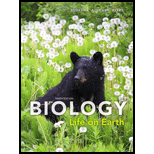
Organisms respond to _______. Organisms acquire and use _______ and ______ from the environment. Organisms are composed of cells whose structure is both ________ and ________. Collectively, organisms _____ over time.
To review:
The given blank space in the statement, “Organisms respond to ______. Organism acquires and uses _____ and _____ form the environment. Organism is composed of cells whose structure is both _____ and _____. Collectively, organism _____ over time.”
Introduction:
Every organism reacts toward stimuli. It helps them to adapt better in their nearby environment. This helps them to establish a balance between their body and surroundings.
Explanation of Solution
The provocatory action due to some activity occurring nearby is known as the stimulus. There are two types of stimuli namely: internal and external stimuli. For the body to the response against any action, there has to be an initiatory action known as the stimulus.
Living organism carries out their metabolic need either by energy production or consumption. Adenosine triphosphate (ATP), which is the energy currency of the cell, is produced when cell absorbs energy or uptakes certain organic or inorganic materials. Therefore, ATP provides energy to carry out the needful process in the cell.
The basic structural and functional unit of life is a cell. The structure and complexity of cell depends upon the organism of which it is a part of its evolutionary history. Multicellular organism contains a number of cells in comparison to a unicellular organism. Evolution is a degree of transformation in terms of heritable traits to the subsequent generation. The theory of evolution was given by Charles Darwin.
Organism responds to stimuli. Organism acquires and uses materials and energy from the environment. Organism is composed of cells whose structure is both organized and complex. Collectively, organism evolves over time.
Want to see more full solutions like this?
Chapter 1 Solutions
Biology: Life on Earth
- What symbolic and cultural behaviors are evident in the archaeological record and associated with Neandertals and anatomically modern humans in Europe beginning around 35,000 yBP (during the Upper Paleolithic)?arrow_forwardDescribe three cranial and postcranial features of Neanderthals skeletons that are likely adaptation to the cold climates of Upper Pleistocene Europe and explain how they are adaptations to a cold climate.arrow_forwardBiology Questionarrow_forward
- ✓ Details Draw a protein that is embedded in a membrane (a transmembrane protein), label the lipid bilayer and the protein. Identify the areas of the lipid bilayer that are hydrophobic and hydrophilic. Draw a membrane with two transporters: a proton pump transporter that uses ATP to generate a proton gradient, and a second transporter that moves glucose by secondary active transport (cartoon-like is ok). It will be important to show protons moving in the correct direction, and that the transporter that is powered by secondary active transport is logically related to the proton pump.arrow_forwarddrawing chemical structure of ATP. please draw in and label whats asked. Thank you.arrow_forwardOutline the negative feedback loop that allows us to maintain a healthy water concentration in our blood. You may use diagram if you wisharrow_forward
- Give examples of fat soluble and non-fat soluble hormonesarrow_forwardJust click view full document and register so you can see the whole document. how do i access this. following from the previous question; https://www.bartleby.com/questions-and-answers/hi-hi-with-this-unit-assessment-psy4406-tp4-report-assessment-material-case-stydu-ms-alecia-moore.-o/5e09906a-5101-4297-a8f7-49449b0bb5a7. on Google this image comes up and i have signed/ payed for the service and unable to access the full document. are you able to copy and past to this response. please see the screenshot from google page. unfortunality its not allowing me attch the image can you please show me the mathmetic calculation/ workout for the reult sectionarrow_forwardIn tabular form, differentiate between reversible and irreversible cell injury.arrow_forward
 Concepts of BiologyBiologyISBN:9781938168116Author:Samantha Fowler, Rebecca Roush, James WisePublisher:OpenStax College
Concepts of BiologyBiologyISBN:9781938168116Author:Samantha Fowler, Rebecca Roush, James WisePublisher:OpenStax College Biology Today and Tomorrow without Physiology (Mi...BiologyISBN:9781305117396Author:Cecie Starr, Christine Evers, Lisa StarrPublisher:Cengage Learning
Biology Today and Tomorrow without Physiology (Mi...BiologyISBN:9781305117396Author:Cecie Starr, Christine Evers, Lisa StarrPublisher:Cengage Learning Human Biology (MindTap Course List)BiologyISBN:9781305112100Author:Cecie Starr, Beverly McMillanPublisher:Cengage Learning
Human Biology (MindTap Course List)BiologyISBN:9781305112100Author:Cecie Starr, Beverly McMillanPublisher:Cengage Learning
 Biology 2eBiologyISBN:9781947172517Author:Matthew Douglas, Jung Choi, Mary Ann ClarkPublisher:OpenStax
Biology 2eBiologyISBN:9781947172517Author:Matthew Douglas, Jung Choi, Mary Ann ClarkPublisher:OpenStax





